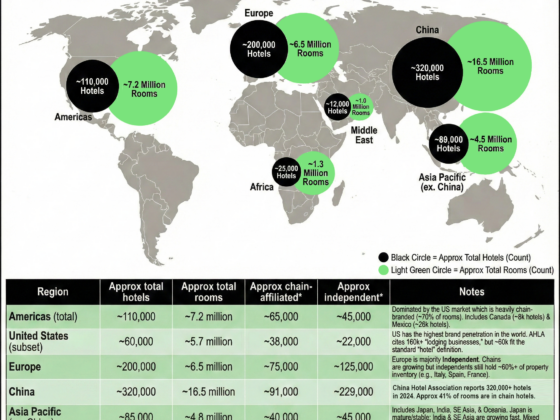
Some VRF systems, like heat recovery configurations, are ideal for hotels, providing simultaneous heating and cooling across different spaces. Their two-pipe design simplifies installation, reducing piping, and potentially decreasing labor time and costs. Guests are also able to control their room temperature, which enhances overall comfort and satisfaction.
With conventional HVAC systems, staff members often get inundated with calls about guests being too hot or cold. VRF solutions help reduce temperature-related guest complaints by allowing for individualized room control while providing personalized comfort.
These high-performance systems help maximize efficiency and integrate seamlessly with building management platforms, giving hotel staff greater control and insight. With the ability to remotely adjust room temperatures, schedule proactive maintenance, and track energy usage in real time, teams can respond faster, reduce downtime, and potentially lower utility costs. The result is a more comfortable stay for guests and smoother, more cost-effective operations for the property.
VRF Systems in Action
When management of the NoMad Los Angeles (NoMad LA), a historic bank turned hotel, was searching for top-of-the-line mechanical systems for its lavish 241-guest-room property, it chose Mitsubishi Electric CITY MULTI® VRF zoning systems. Doing so enabled the 14-story National Historic Landmark to achieve more efficient operations while maintaining guest comfort. Guests can set the heating and cooling to their preferences and are pleasantly surprised by the quiet operation and seamless temperature adjustment.
Space constraints were also part of the reason VRF systems were chosen by NoMad LA. VRF systems have a smaller footprint than conventional HVAC systems, making them an attractive choice for properties squeezed for space. Their smaller size allowed NoMad LA to add a pool, bar, restrooms, and a restaurant to the rooftop space, adding to guest amenities and revenue streams.
On the other side of the country, Marriott’s modern hotel brand, Moxy, chose to install a CITY MULTI® VRF system. This decision also demonstrates how high-performing HVAC and luxury can go hand in hand. As an energy-efficient building that maximizes leasable space, the 10-story, 150,000 square-foot building in Columbus, Ohio’s Short North Arts district, can keep occupants comfortable while minimizing operational costs.
The mixed-use property also benefits from the VRF system’s design flexibility, which perfectly suits the variety of needs of the building, creating more usable, leasable, and revenue-generating space. Modularity allows for easy customization and zoning so the system can be tailored to each area of the property – whether guest suite, spa, or fitness studio.
The Business Case for Innovative Cooling and Heating Systems
A report from CBRE highlights that investing in modern systems can lower operational costs and enhance cash flow – critical metrics in a competitive hospitality market. Hotels that have upgraded to high-efficiency HVAC systems have seen a noticeable reduction in energy costs.
High-performance VRF systems minimize energy use by adjusting their output based on real-time demand, such as room occupancy and temperature requirements. PTAC systems run continuously at full capacity, whereas VRF solutions use inverter-driven compressors that modulate refrigerant flow, meaning they can run at partial load instead of always being on or off. When integrated with sensors or building automation systems, VRF can ramp up or down based on occupancy − reducing energy waste in empty spaces.
Unlike conventional systems, VRF systems can manage a variety of temperature extremes, making them adaptable to both hot and cold climates without losing efficiency. Properties have reported improved guest satisfaction and lower utility bills after upgrading to VRF systems.
As new refrigerants emerge in the market, Hybrid VRF offers an alternative all-climate heat pump solution, combining refrigerant-based outdoor units with water-based indoor distribution through a Hybrid Branch Circuit Controller. It delivers simultaneous heating and cooling with less refrigerant, boosting energy efficiency, safety, regulatory compliance, and zoning flexibility. Ideal for hotels with smaller footprints, Hybrid VRF’s compact piping, lower refrigerant volume, and efficient operation simplify installation while providing guests with precise, quiet, and personalized comfort.
The question isn’t whether hoteliers can afford to upgrade legacy HVAC systems – it’s whether they can afford not to.
ABOUT THE AUTHOR
As Senior Manager of Vertical Markets for Mitsubishi Electric Trane HVAC US (METUS), Tom Varga is responsible for the growth of ductless and variable refrigerant flow (VRF) sales within the U.S. hotel/lodging market. He develops strategies and business plans while managing relationships to generate an ever-increasing pipeline of new business for the company.







